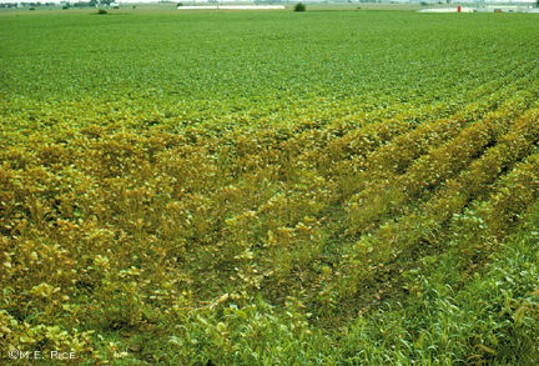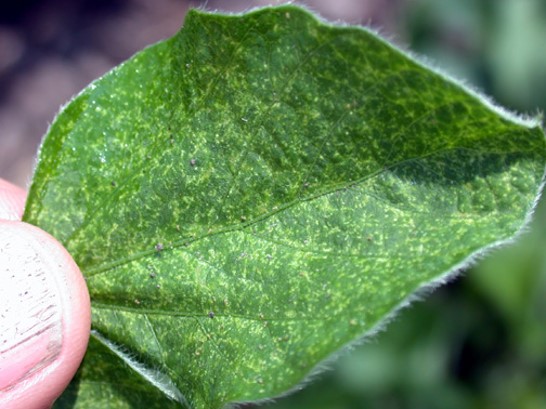Main Content
While driving across the County, I have begun to see soybean fields with two-spotted spider mites. This is not surprising, given the hot and dry weather we have been experiencing. It is most common to experience problems with spider mites during drought periods. Under high temperatures and dry conditions, spider mite infestations can increase rapidly over short periods of time. Initial infestation is usually found on field borders. This is the opportunity for control measures before they disperse across the field. Generally, spider mites are dispersed across the field by wind.


Spider mites feed on the underside of the leaves. Foliage of infected fields has a speckled appearance. In severe infestations, infested leaves will turn yellow to tan, or sometimes bronze-colored, and may drop off plants. Spider mite populations tend to thrive on plants under stress. Under severe infestation studies have shown a 47% yield loss between untreated and treated fields. Rain may offset minor infestations. Treatment of two-spotted spider mites may not be required when temperatures drop below 85 degrees and humidity levels are greater than 90 percent for an extended time, because a naturally occurring fungus can control populations. A hand magnifying lens is recommended to scout for two-spotted spider mites. Currently available insecticides labelled for mite control and miticides available for soybeans do not provide long-term protection from the pest. Since the pest recovers rapidly after treatment, fields need to be monitored continually for resurging populations.